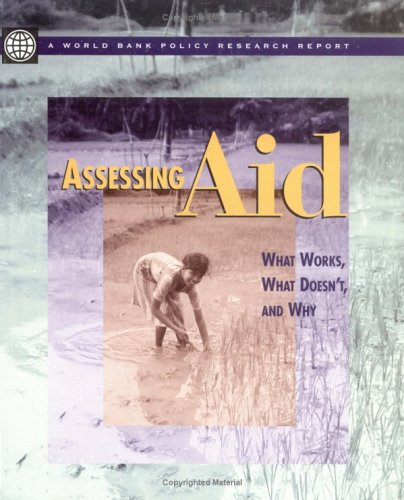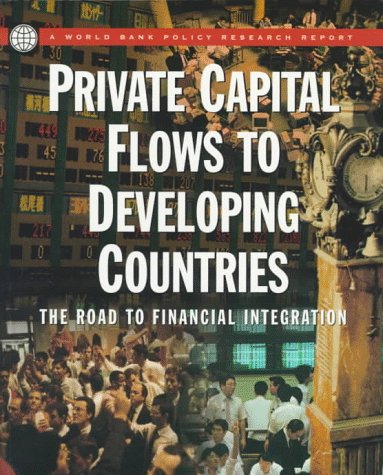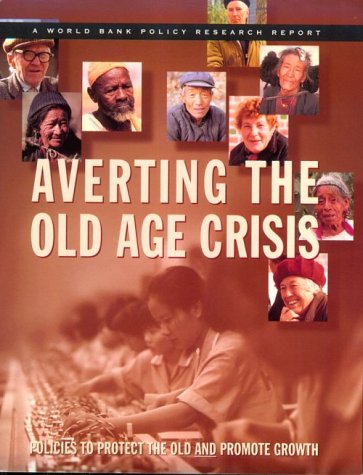World Bank Policy Research Reports
5 total works
While there has been more progress with poverty reduction since the 1950s than in any comparable period of human history, poverty remains a severe global problem. This book determines that the effectiveness of aid is not the amount received but rather the institutional and policy environment into which it is accepted. It examines how development assistance can be more effective at reducing global poverty and gives five main recommendations for making aid more effective: targeting financial aid to poor countries with good policies and strong economic management; providing policy-based aid to demonstrated reformers; using simpler instruments to transfer resources to countries with sound management; focusing projects on creating and transmitting knowledge and capacity; and rethinking the internal incentives of aid agencies.
Greening Industry shows how recent economic and regulatory policy reforms are reducing industrial pollution in developing countries without threatening economic growth. An interactive CD-ROM is included with the book, linking the text directly to background papers, databases and resources available on the Internet.
The world's financial markets are rapidly integrating into a single global marketplace, and developing countries are being drawn into this process starting from different points and moving at various speeds. Those with adequate institutions and sound policies in place may proceed smoothly along the road toward financial integration and gain the many benefits that integration can bring. Most of the developing economies, however, lack many of the necessary prerequisites for such a move; a few are so unprepared that integration may do them more harm than good. Developing countries may have little choice about whether to follow this path - advances in communications and new developments in finance have made the course inevitable - but they may still choose the ways in which they proceed, choosing the policies that benefit the economy and averting potential shocks. This World Bank report looks at the important challenges both sets of countries face in a new age of global capital.
The book presents new and compelling evidence that, while low interest rates in industrial countries provided an initial impetus to the surge in private capital flows during 1989-93, these flows have entered a new phase, driven by increased financial integration. The report analyzes the causes and effects of integration, with a particular emphasis on how developing countries in the nascent stages of integration can learn from the experiences of the more rapidly integrating developing countries. The first half of the report provides the setting, analyzing the process of financial integration, the forces driving private capital to developing countries, and the potential benefits of integration. The second half looks at the domestic policy challenges that developing countries must overcome, including the macroeconomic problems of an overheating economy, reforms in the domestic financial sector, and the agenda for capital market reform.
The book presents new and compelling evidence that, while low interest rates in industrial countries provided an initial impetus to the surge in private capital flows during 1989-93, these flows have entered a new phase, driven by increased financial integration. The report analyzes the causes and effects of integration, with a particular emphasis on how developing countries in the nascent stages of integration can learn from the experiences of the more rapidly integrating developing countries. The first half of the report provides the setting, analyzing the process of financial integration, the forces driving private capital to developing countries, and the potential benefits of integration. The second half looks at the domestic policy challenges that developing countries must overcome, including the macroeconomic problems of an overheating economy, reforms in the domestic financial sector, and the agenda for capital market reform.
To reverse the economic decline that began in the 1970s, many sub-Saharan African countries have undertaken efforts to restructure their economies. This has included liberalizing trade, deregulating markets and prices, privatizing public enterprises, and strengthening management of the financial and public sectors. Implementation has been uneven in different countries, and even those countries that have attempted major reforms have not achieved poicies that are considered sound by international standards. A key finding of this book is is that improving policies paid off in higher GDR and sectoral growth rates, which are vital to reducing poverty; but in countries where policies deteriorated economic performance worsened. Despite the importance of reforming economic policies, it is not enough and countries need to invest more in human capital and infrastructure, expand their institutional capacity, and develop better governance. This is the second title in the World Bank Policy Research Reports (the first was the East Asian Miracle 1993).
This policy-oriented book identifies the issues countries should consideras they reevaluate their old income security policies and formulate new methods. The choice between the various models for providing old-age security has broad implications for the operation of labour and capital markets, the fiscal system, and the level, growth, and distribution of GNP. The author firmly establishes her hypothesis that a system build on several pillars is prefereable to any singel method for providing old-age security. A mixed stragety is the best way to accomplish many goals with minimum costs, including evasionary , distortionary, and uncertainty costs. The author evaluatiosn the impact of different mixes on the distribution costs and benefits and the problems faced when switching methjods, The author also outlines a forthcoming book which will analyse specific features of each system.




